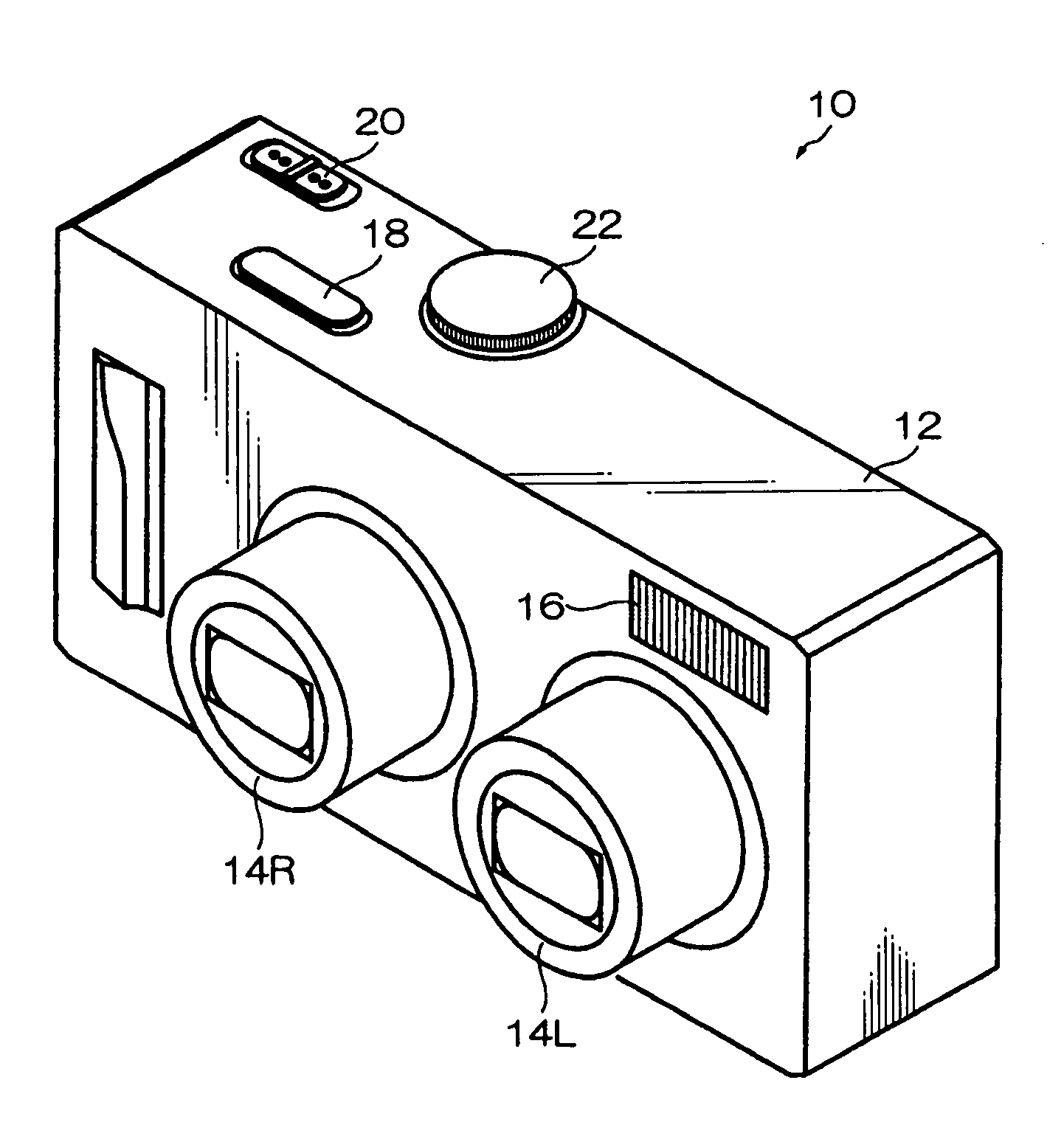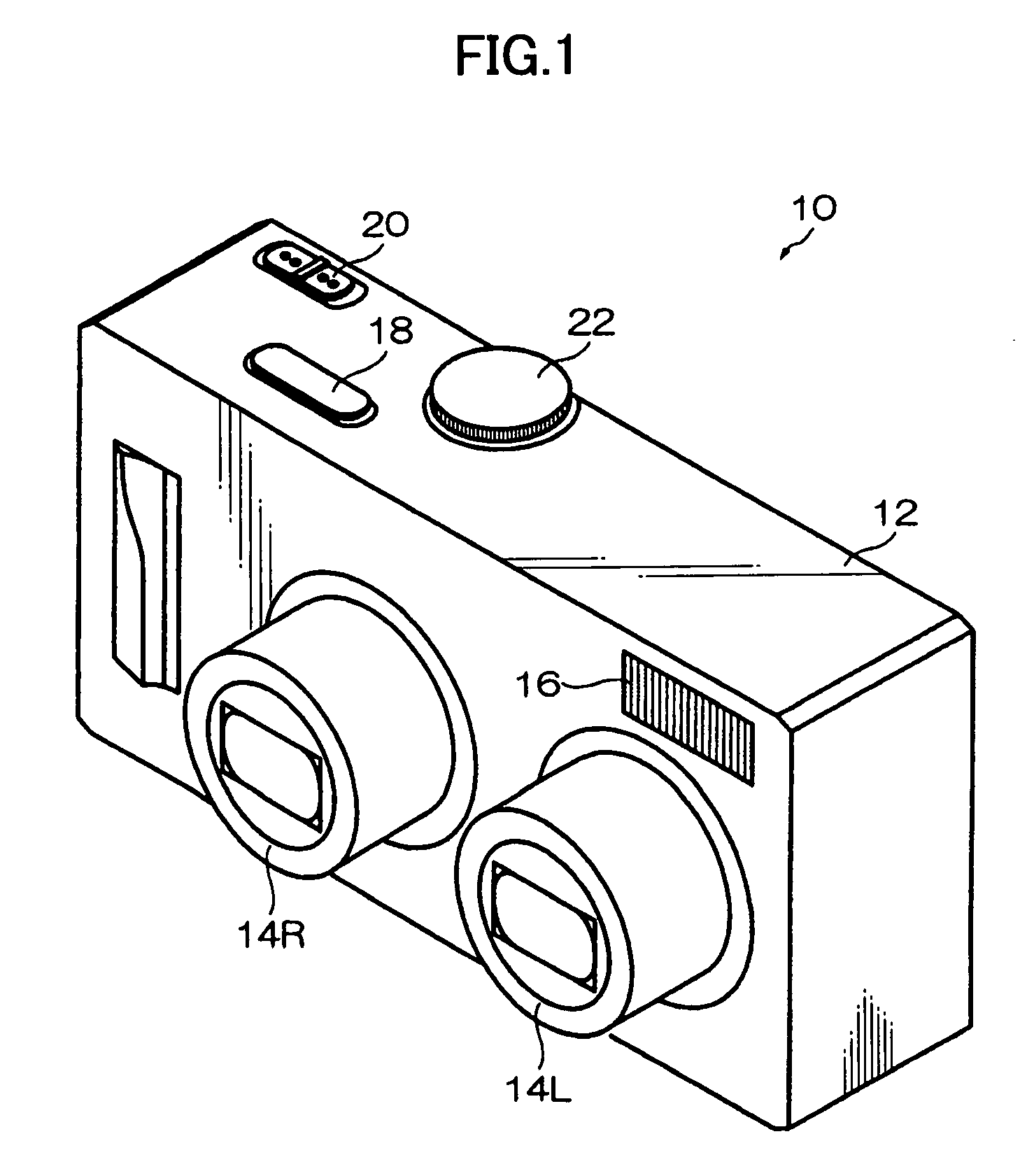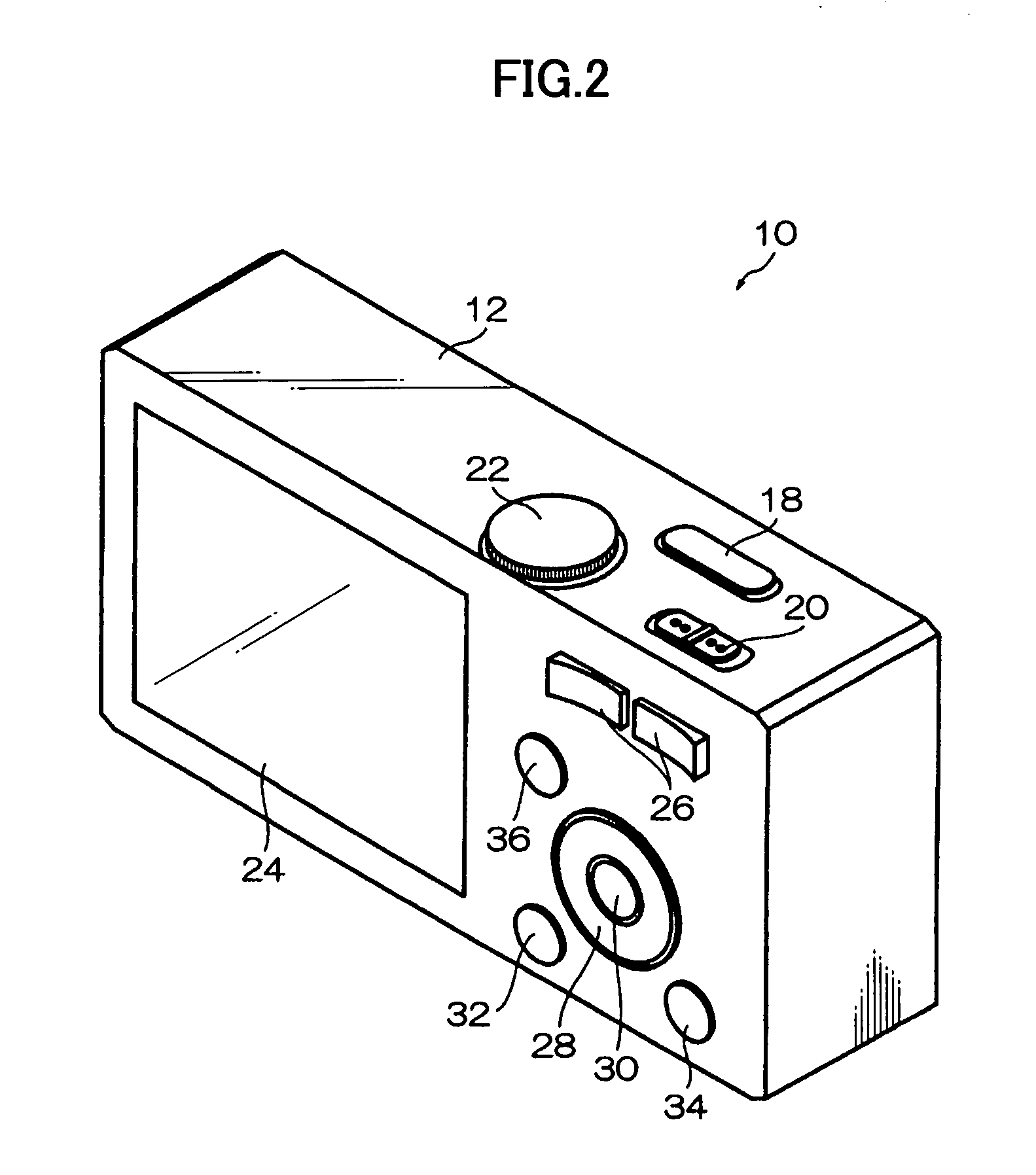Photographing apparatus
a technology of photographing and apparatus, applied in the field of photographing apparatus, can solve the problems of many images being corrected in a long time and troublesome manual tilt correction, and achieve the effect of high quality stereographic image, simple acquisition, and high quality
- Summary
- Abstract
- Description
- Claims
- Application Information
AI Technical Summary
Benefits of technology
Problems solved by technology
Method used
Image
Examples
first embodiment
[0050]FIGS. 1 and 2 are a front perspective view and a back perspective view of an appearance of a digital camera which employs the present invention.
[0051]The digital camera 10 is adapted to photograph the same subject from two viewpoints on the left and right of the subject at the same time to produce a three-dimensional (3D) image of the subject.
[0052]The camera body (apparatus body) 12 of the digital camera 10 has a form of rectangular box with a pair of photographing lenses 14R, 14L, a flash 16 and the like provided on the front side, and a shutter button 18, a power / mode switch 20, a mode dial 22 and the like provided on the top as shown in FIG. 1.
[0053]The camera body 12 has a monitor 24, a zoom button 26, a directional button 28, a MENU / OK button 30, a DISP button 32, a BACK button 34, a macro button 36 and the like provided on the back as shown in FIG. 2.
[0054]The camera body 12 has a tripod socket, a battery cover to open and close, and the like on the bottom, though they ...
second embodiment
[0219]FIG. 14 is a plan view showing a configuration of a substantial part of the digital camera to which the present invention is applied.
[0220]As shown in FIG. 14, the digital camera of the embodiment is adapted to have the photographing lenses 14R and 14L horizontally movable and their setting positions adjustable. Specifically, the digital camera is adapted to adjust the base line length D (with the shooting directions fixed).
[0221]As the digital camera of second embodiment is the same as that of the first embodiment except that the digital camera of the second embodiment can adjust the base line length D, only the mechanism for adjusting the base line length will be described here.
[0222]As shown in FIG. 14, the photographing lenses 14R and 14L have the image pickup devices 134R and 134L attached to the rear anchor parts of the lens tubes 15R and15L of the lenses. The image pickup devices 134R and 134L are arranged on the optical axes LR and LL of the photographing lenses 14R an...
third embodiment
[0232]FIG. 15 is a plan view showing a configuration of a substantial part of the digital camera to which the present invention is applied.
[0233]As shown in FIG. 15, the digital camera of the embodiment is adapted to have the photographing lenses 14R and 14L turn so that the shooting direction (the orientation of the optical axes LR and LL), i.e., a convergence angle (an angle formed by the optical axes LR and LL of the photographing lenses 14R and 14L) γ can be adjusted (with the setting position fixed).
[0234]As the digital camera of the third embodiment is the same as that of the first embodiment except that the digital camera of the third embodiment can adjust the convergence angle, only the mechanism for adjusting the convergence angle will be described here.
[0235]As shown in FIG. 15, the photographing lenses 14R and 14L have the image pickup devices 134R and 134L attached to the rear anchor parts of the lens tubes 15R and 15L of the lenses. The image pickup devices 134R and 134...
PUM
 Login to View More
Login to View More Abstract
Description
Claims
Application Information
 Login to View More
Login to View More - R&D
- Intellectual Property
- Life Sciences
- Materials
- Tech Scout
- Unparalleled Data Quality
- Higher Quality Content
- 60% Fewer Hallucinations
Browse by: Latest US Patents, China's latest patents, Technical Efficacy Thesaurus, Application Domain, Technology Topic, Popular Technical Reports.
© 2025 PatSnap. All rights reserved.Legal|Privacy policy|Modern Slavery Act Transparency Statement|Sitemap|About US| Contact US: help@patsnap.com



